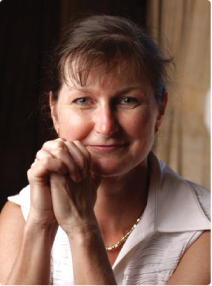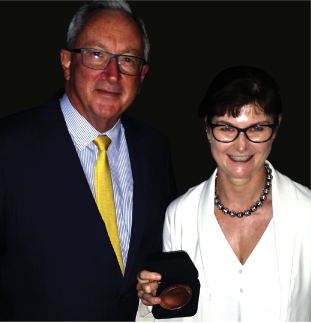
With 25 years of experience as a rhinoplasty Surgeon & ENT Surgeon, she is a longstanding member of the Royal Australasian College of Surgeons and the Australasian Academy Of Facial Plastic Surgery (Treasurer 1999-2005, Executive Secretary from 2020). Her main surgical interests are rhinoplasty and surgery for the correction of prominent ears.
“My aim is to first listen to the patient’s concerns about the bump, tip, deviation or poor airway. After examining the nose inside and outside and with photography, I guide the patient through the decision making process. The question really is, what is possible with surgery?”
“I strongly believe that the best possible outcome for rhinoplasty is a normal looking nose that no one notices. If the nose is unremarkable we focus on the eyes. This is what I want to achieve for my patients.”

Rhinoseptoplasty means re-shaping the nose and straightening the internal nasal septum so as to improve the nasal airway. It’s commonly referred to as nose reshaping surgery. Most people consider having rhinoplasty for months before they actually ask for a referral. Rhinoplasty is often performed for crooked noses following injury. At times there is no history of trauma.
read more »

Otoplasty means reshaping the ear. Between three and five per cent of all people have prominent ears. Usually, the outer curve of the ear is unfolded. To repair this, sutures are placed in the cartilage framework of the ear and hidden under the skin. There is also a dissolving stitch in the skin to close the skin incision camouflaged behind the ear.
read more »

Sinus surgery is appropriate for people who have failed intensive medical treatment. Endoscopic surgery takes around one hour and is performed under general anaesthesia and usually requires one night in hospital.
read more »

Tonsillectomy is the surgical removal of the tonsils, two oval-shaped lymph glands at the back of the throat — one on each side. It’s offered to children and adults suffering from obstructive sleep apnoea or from recurrent tonsillitis . Some adults with bad breath resistant to mouth wash have smelly pellets in their tonsils . The only cure for their bad breath is tonsillectomy.
read more »

Glue ear is a condition that occurs when the middle part of your ear fills with fluid. In 90% of children, this fluid will clear in two to three months but if not it can cause problems such as a hearing loss which leads to poor speech development, inattention, bad behaviour, and imbalance in toddlers. It may be the cause of poor progress at school for older kids.

After 25 years Dr Gillian Dunlop is one of Australia’s leading specialist ENT Surgeons with a special interest in rhinoplasty and otoplasty surgery.
In 2018 Dr Gillian Dunlop was awarded the Graham Coupland Medal by the Minister for Health, the Hon. Brad Hazzard on behalf of the Royal Australasian College of Surgeons for her exemplary work as a surgeon
.
Her qualifications are Fellow (ENT) Royal Australasian College of Surgeons, 1996. MB BS (Hons) University of Sydney, 1988. BSc (Med) Pass with Distinction, University of Sydney, 1985.
She is a member of the:
The nurses will show you how to douche your nose with saline to keep it clean. Keep the plaster dry and wash your face with a sponge or face washer.
In hospital you will have 3 pillows to raise up your head and reduce the swelling. At home you can use your normal pillow. No need to sleep up so high after the 1st night.
If you have a bad neck we suggest you bring a travel pillow to help avoid neck strain in the Recovery ward when you are sitting up but drowsy.
Ice helps in the first 12 hours but the benefit after 12 hours is less.
We will remove these 1 week after surgery. It is a good idea to watch Dr Dunlop’s video Removing the Stitches and Plaster before the day so you know what to expect and can see how easy it is. We suggest you put Vaseline on the row of stitches under your nose on the day of your appointment. The Vaseline cleans the stitches so they slide out more comfortably.
We really encourage people to walk 30-60 minutes a day for the first 12 days. Then they can return to the gym. If you exercise too much too soon you might cause bleeding.
When walking use a sun visor rather than sunglasses to reduce the weight on the bridge of the nose.
Most people who wear glasses will want to use their lightest pair or use a piece of cotton wool over the bridge of the nose to support the glasses in the first 3 weeks. After 3 weeks it is usually not uncomfortable to wear glasses.
Bruising may not even happen if we are just working with cartilage changes. Bruising tends to happen if we need to work with bone such as a crooked nose or a very large hump.
If there is bruising it can last around 12 days. Concealer can be used after the first 7 days when the plaster is removed.
We will give you a certificate for 2 weeks off work. It is normal to be very tired in the first week though there is minimal pain.
We will show you photos of other people’s noses. The main swelling goes down in the first few months but it can take up to 2 years to see your final result.
You will need to wait at least 4 months before considering this type of photo. The nose will look better and better over time so it is best to wait.
We recommend you buy Drixine nose spray from the chemist and squirt it in your nose. This medicine will shrink down blood vessels. Bleeding is very uncommon but it tends to come from the front of the nose where the internal splints are positioned.
It is not uncommon to have a watery nose after nose surgery. This can last for years and the cause is unknown.
We recommend at least 4 appointments over an 18-month period. We don’t charge you for these appointments as it is all part of making sure you have the best possible result. We are checking to make sure the cartilage is healthy and uninfected.
We will take photos prior to surgery so we can discuss the planned changes.
We will photograph you at the end of the operation so you know what to expect the nose will look like when the swelling goes down. We then photograph you over the 18 months after surgery so you can see the new nose evolving.
You will ring the nursing staff the afternoon before your operation to check on the arrival time and fasting time.
Wear loose comfortable clothes that will be easy to put on and off when you have a plaster on your nose. As we said above, don’t wear make up and have clean hair. If your hair is long, wear a high pony tail so it is out of the way during the surgery when you are lying on your back.
Most rhinoplasty procedures take 4 to 4 ½ hours. This could be longer if a rib graft is needed.
If you have already undergone a rhinoplasty or septoplasty or have had major trauma to your nose you may need a rib graft. The rib provides cartilage for building blocks to rebuild your new nose. Rib cartilage can come from a donor or from you.
The hospital will give you a saline douche for keeping the nose clean and antibiotic capsules. Most people are also given a few days of medicine to reduce the swelling.
Most people only take pain relief the night of the surgery. We will give you some pain relief tablets to take home but generally Panadol is all that you will need.
Because their nose is blocked most people are aware of a dry throat from the constant mouth breathing. The blockage is relieved the day the splints are removed which is 1 week after surgery.
No. You will be too tired after a long operation. Besides the Government will not cover you for Third Party Insurance.
We suggest you look at the before/after gallery photos on the different websites and examine the reviews. The best way is to speak with someone who has already had a good experience and can provide a recommendation.
We suggest you bring some images of a nose you really admire. We will then discuss if it is a realistic goal for you. It is also a good idea to bring any scans or other information relating to your nose. If you bring a referral, you will be able to have a Medicare rebate.
Medicines that thin the blood and increase bruising and swelling include Aspirin and NSAIDS such as Naprosyn, Naprogesic, Celebrex, Indocid, Ibuprofen, Ponstan and Voltaren. Fish Oil, Vitamin E, Gingko, Echinacea and Manuka Honey all have a similar effect.
We recommend you avoid these medicines 2 weeks before and 2 weeks after surgery to reduce bleeding and bruising.
Don’t wear any makeup or earrings to hospital. If you do, they will be removed to reduce the risk of infection.
When you wake up you will have a plaster on your nose. The plaster must be kept dry for 1 week so you won’t be able to wash your hair. That means it is important to have really clean hair on the day of your rhinoplasty.
You must be 18 years to undergo Rhinoplasty. If you are under 18, you must obtain a report from a psychologist and undergo a 3 month cooling off period.
Yes, greatly. During the rhinoplasty the cartilage in the nose is re-shaped in order to achieve a normal look. Nicotine in cigarettes or vaping will reduce the blood supply to these areas and possibly lead to breaking down of some of the cartilage. This can result in notches, asymmetry and even loss of skin. It is best to avoid nicotine for 1 month pre op and 3 months post op. Even passive smoking is a problem.
At your appointment you will be given a quote for Dr Dunlop but you need 2 other quotes to know the total cost. We will give you the phone number for the anaesthetist and the hospital so you can obtain their quotes as well. You need to check with your health fund that you are covered for rhinoplasty before the surgery. Health funds and Medicare pay very little towards the surgical and anaesthetic fees. They contribute mainly towards the hospital costs such as the theatre fee and overnight stay. Without insurance hospital fees in 2022 are round $7,000. If you choose to go home the day of surgery rather than stay overnight the saving may only be several hundred dollars (2022).
TO REQUEST AN APPOINTMENT WITH DR DUNLOP PLEASE RING 02 9487 7877 OR FILL OUT THE FORM BELOW, PLEASE BRING YOUR DOCTOR'S REFERRAL ON THE DAY OF THE APPOINTMENT.
If you would like to organise an initial discussion to discuss your sydney rhinoplasty treatment. Please book a consultation. Call us on (02) 9487 7877. Or fill out the form below.
If you would like to organise an initial discussion to discuss your sydney rhinoplasty treatment. Please request a consultation. Call us on (02) 9487 7877. Or fill out the form below.
8/176 Fox Valley Road Wahroonga, NSW 2076